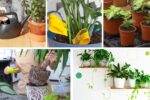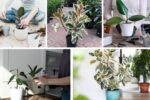A planter box is one of the most versatile and rewarding additions you can create for your home garden. Whether you have a sprawling backyard or a small balcony, planter boxes allow you to grow flowers, herbs, or vegetables in a manageable, aesthetic, and organized way. Building a planter box yourself is not only cost-effective but also gives you the freedom to customize its size, design, and material according to your garden’s needs.
This guide provides you with detailed information on building, planting, and maintaining DIY planter boxes, ensuring you enjoy a thriving garden at home.
Why Choose Planter Boxes?
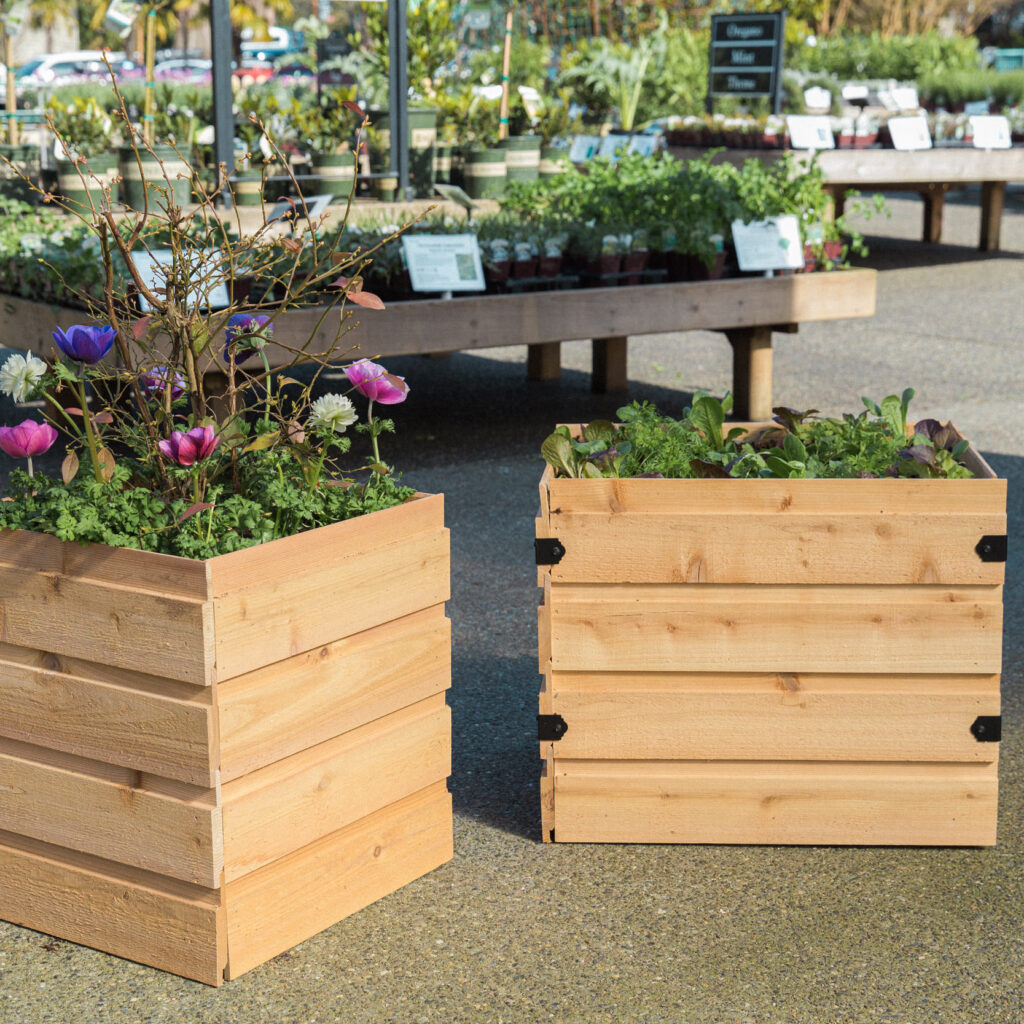
Before diving into the DIY process, it’s important to understand why planter boxes are such a popular gardening choice:
- Space Efficiency – Planter boxes make it easy to grow plants in limited areas like balconies, patios, and rooftops.
- Soil Control – You can fill the box with high-quality soil suited to the specific plants, unlike in-ground gardening where soil quality may vary.
- Mobility – Depending on design, planter boxes can be portable, allowing you to move plants to sunnier spots or indoors in extreme weather.
- Reduced Weeds and Pests – Elevating plants from the ground naturally limits weed growth and reduces exposure to soil-borne pests.
- Aesthetic Appeal – Planter boxes can be customized to match your garden’s style, adding charm and orderliness to the space.
Materials Needed for DIY Planter Boxes
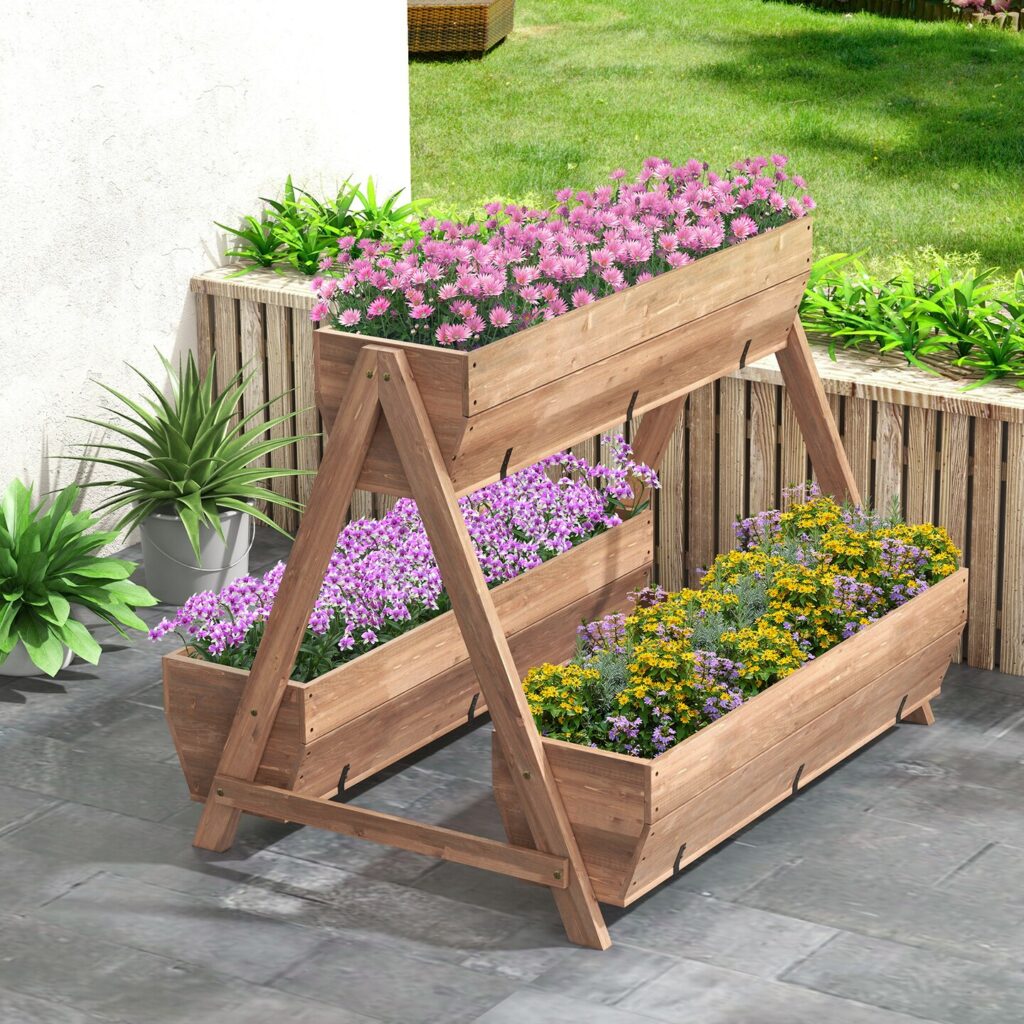
Building a planter box doesn’t require advanced carpentry skills or expensive tools. You can use common materials available at hardware or home improvement stores.
Common Materials:
- Wood: Cedar, redwood, or treated pine (resistant to rot and insects).
- Screws/Nails: Galvanized or stainless steel to prevent rusting.
- Lining Material: Landscape fabric or plastic sheeting for moisture retention.
- Tools: Saw, drill, hammer, measuring tape, sandpaper, and a screwdriver.
- Optional Additions: Casters (wheels), paint/stain, or corner brackets for extra stability.
Tip: Avoid pressure-treated lumber if you’re planting edibles, as chemicals can leach into the soil.
Step-by-Step Guide to Building a Planter Box
Here’s a simple DIY method for creating a sturdy, rectangular wooden planter box:
Step 1: Plan Your Size
- Decide the dimensions based on your available space.
- A typical size is 3–4 feet long, 1–2 feet wide, and about 1–2 feet deep.
- Depth depends on the type of plants: herbs and flowers need about 8–12 inches, while vegetables like tomatoes or carrots need 18–24 inches.
Step 2: Cut the Wood
- Cut four planks for the sides and two for the base.
- Sand the edges to avoid splinters.
Step 3: Assemble the Frame
- Arrange the planks into a rectangular frame.
- Secure the corners with screws or nails.
- Use corner brackets if needed for additional strength.
Step 4: Attach the Base
- Fix the bottom planks tightly across the frame.
- Leave small gaps between planks for drainage if not using a liner.
Step 5: Drill Drainage Holes
- If you’re using a solid base, drill several holes to ensure proper water drainage.
Step 6: Add Liner (Optional)
- Line the inside with landscape fabric or heavy-duty plastic.
- Cut holes at the bottom to allow excess water to escape.
Step 7: Customize the Look
- Paint or stain the outside for weather protection and aesthetic appeal.
- Attach casters if you want the planter box to be mobile.
Best Plants for Planter Boxes
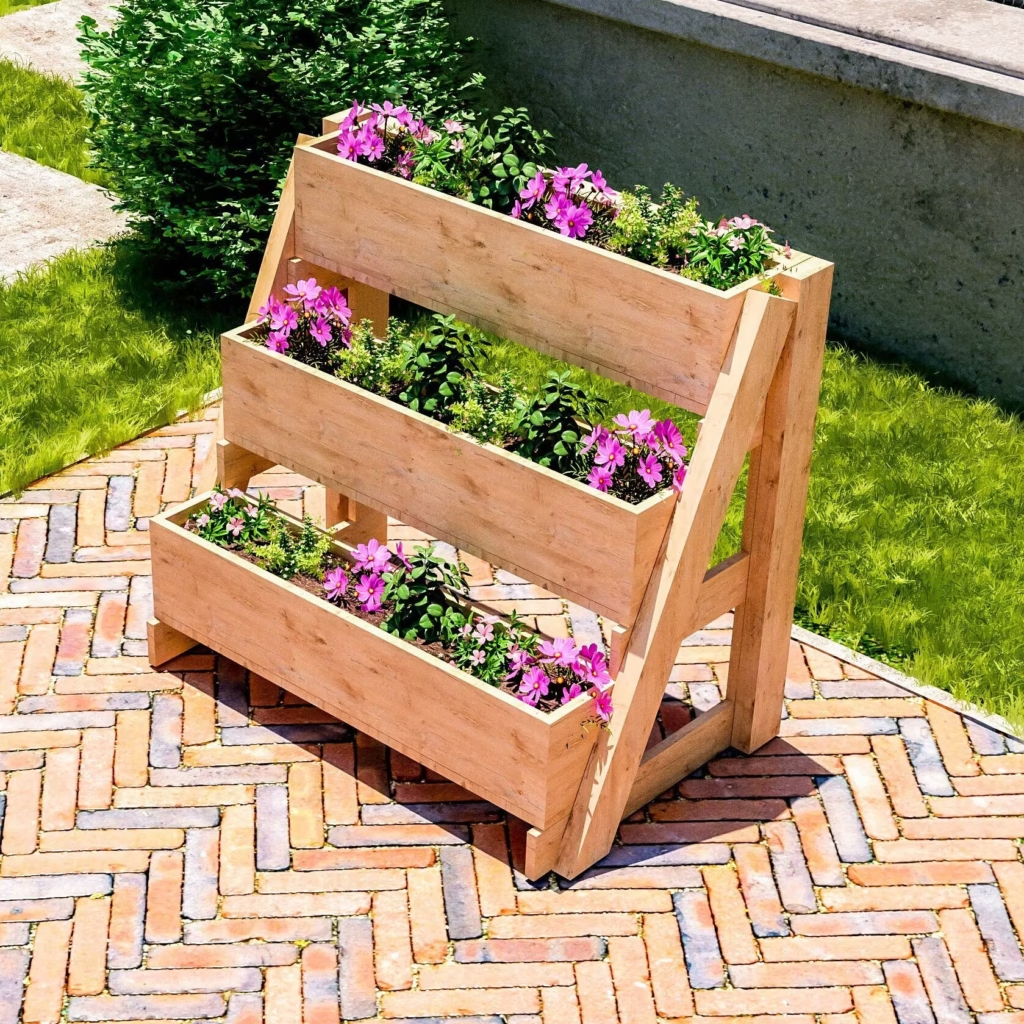
Planter boxes are incredibly versatile, suitable for a wide range of plants. Choosing the right plants ensures success and beauty in your garden.
1. Herbs
- Basil, mint, thyme, oregano, parsley, and cilantro thrive in shallow boxes.
- They’re perfect for kitchen gardeners.
2. Vegetables
- Leafy greens like lettuce, spinach, and kale grow well.
- Root crops such as radishes and carrots need deeper boxes.
- Compact varieties of tomatoes, peppers, and beans also thrive.
3. Flowers
- Annuals such as petunias, marigolds, and geraniums add seasonal color.
- Perennials like lavender, daisies, and coneflowers provide lasting beauty.
4. Succulents
- Planter boxes with shallow soil are ideal for succulents and cacti.
5. Small Fruit Plants
- Strawberries and dwarf varieties of blueberries are perfect for planter boxes.
Soil and Fertilizer Tips

The success of your planter box garden largely depends on the soil.
- Use Lightweight Potting Mix: Garden soil can compact and suffocate roots. A well-draining potting mix ensures healthy growth.
- Add Compost: Improves fertility and provides organic nutrients.
- Fertilizers: Use slow-release organic fertilizers or liquid feeds every few weeks.
- Mulching: A thin mulch layer helps retain moisture and reduces weeds.
Watering and Maintenance
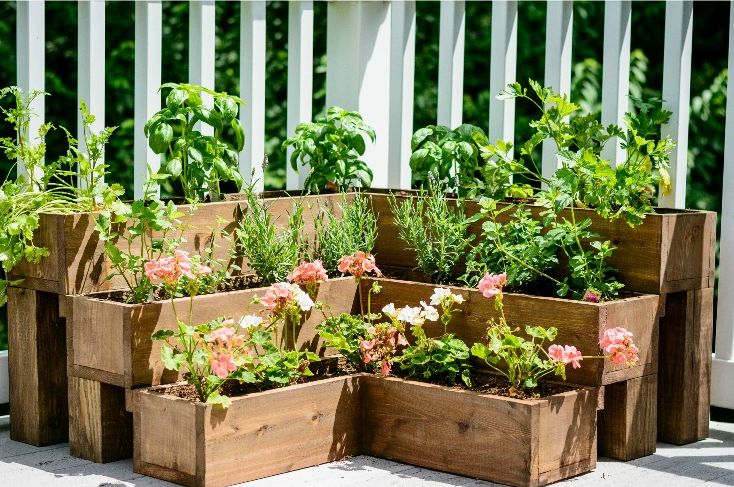
Proper watering is key to healthy planter box plants.
- Consistent Watering – Containers dry out faster than ground soil. Check daily during hot weather.
- Avoid Overwatering – Ensure good drainage to prevent root rot.
- Self-Watering Option – Add a reservoir system or water-retaining crystals for busy gardeners.
- Pruning and Harvesting – Regularly trim herbs and deadhead flowers to encourage continuous growth.
- Pest Control – Keep an eye out for aphids, spider mites, or caterpillars. Neem oil and insecticidal soap are safe remedies.
Design Ideas for Stylish Planter Boxes
Beyond functionality, planter boxes can also serve as design elements in your garden:
- Vertical Planter Boxes: Great for small spaces; stack boxes or mount them on walls.
- Tiered Planters: Multiple levels add visual interest and maximize growing area.
- Raised Garden Beds: Waist-height boxes reduce bending and make gardening more accessible.
- Rustic Style: Use reclaimed wood or pallets for a vintage look.
- Modern Touch: Paint with bold colors or use metal for sleek designs.
Seasonal Care
- Spring: Start planting cool-season crops and flowers.
- Summer: Provide extra water and shade-loving plants if the sun is intense.
- Fall: Replace summer plants with leafy greens or fall flowers like pansies.
- Winter: Move mobile planter boxes indoors or cover them with frost cloth.
Advantages of DIY vs. Store-Bought Planter Boxes
| DIY Planter Box | Store-Bought Planter Box |
|---|---|
| Customizable size & design | Limited styles and dimensions |
| Cost-effective | May be more expensive |
| Satisfaction of building your own | Ready to use, no effort needed |
| Can use eco-friendly recycled materials | Materials may not always be sustainable |
Conclusion
DIY planter boxes are more than just containers for plants—they are tools that empower gardeners to grow a variety of herbs, vegetables, flowers, and fruits with ease. Building your own allows customization to suit your gardening space, whether it’s a balcony, backyard, or rooftop. By choosing the right materials, soil, and plants, and by maintaining proper watering and care, your planter boxes can produce fresh food and add aesthetic value year-round.
With a little creativity, you can design planter boxes that not only support thriving plants but also transform your outdoor or indoor spaces into lush, vibrant, and sustainable gardens. Whether you’re a beginner or an experienced gardener, this DIY planter box guide is your key to cultivating beauty and productivity right at home.

